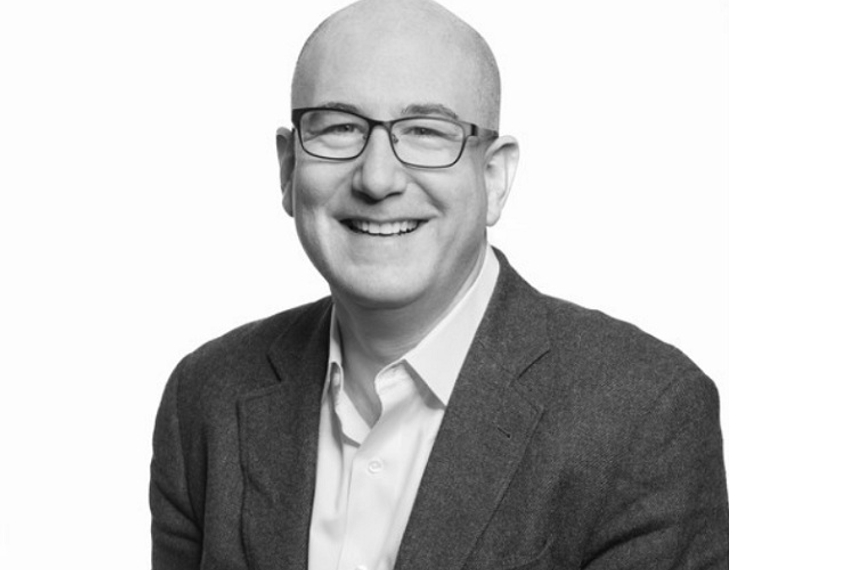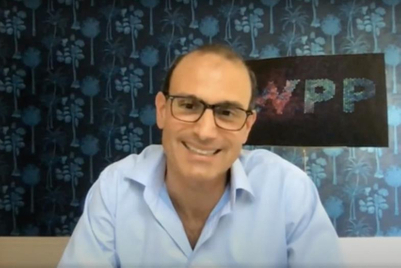At Spikes Asia 2018, Alan VanderMolen, president, WE Worldwide spoke about how marketing in today's day and age is about more personal customer experience. We caught up with him on the sidelines of the festival to learn more about this and the PR industry as a whole.
Edited excerpts:
What are the top talking points that you are focusing upon at Spikes?
We are seeing real questions about how people’s data is being used on media platforms and by brands. We are starting to see consumers push back. We did a research, ‘Brands in Motion’ – and that research said, essentially consumers still have exponential expectations from brands to innovate using technology but 97 per cent also expect brands to use that technology ethically.
And if brands aren’t doing that, they have no problem asking the government to come in. So we are seeing consumers sending a strong message – self regulate or be regulated. So our game show looked at what we would call the tug of war between technology and humanity with brands in the middle and increasingly them needing to play the role of moderator.
It’s just getting topical now.
Some FMCG companies especially are doing so. We are seeing Unilever and P&G doing this. In terms of push back they’re putting on media platforms and the kind of programmatic content that media platforms are putting up next to their brand’s social feeds and their brands social feeds. They’re saying we’ll pull out our advertising dollars unless the platforms moderate content.
We are also seeing a movement towards what I call ‘ethical algorithms’ and algorithms that help to make sure that personal data is not being compromised. This will be on the rise globally.
In India, WE recently acquired Avian Media. How has that worked out?
We had a small existing business in India and we needed a bigger platform for the demand we had in the country. Our presence in India was a US$ 4,00,000 (approximately Rs 2.8 crore) business. So our turnover was tiny. In India you need to be at atleast US$ 5 million (approximately Rs 35 crore) to be significant. Avian combined with our business is getting us up to 7 million (approximately Rs 49 crore). Our aim is to be a US$ 10 million dollar (Rs 70 crore) agency in the next three years. And I think the deal with them was terrific because they’re independently minded. I think we both have a very strong belief in similar sectors – technology, health and consumer. I think we’re both very much focused on what I would call – the modernisation of the sector by being able to play across the whole media ecosystem. It’s not just being informed in earned, but playing across paid-earned, social, experiential and search.
Among the nine markets WE is present in, where would India rank now? How different is the Indian market to the rest of the world?
United States is our largest market. Our second largest market would be China and India would be just behind that. Singapore and Australia follow in fourth and fifth.
The Indian market has a great ability to leap frog Western markets in particular based on penetration of the mobile web. Brands are innovating a lot in mobile.
It’s a challenge for the traditional PR agencies to have the permission to play on the mobile platform. Most Indian clients still look to their agencies to provide them really strong earned media. That is important – and that’s the price of entry as a PR agency. But we think it’s important to play in what we call branded content and to move that branded content across the whole media ecosystem.
The consumers, news and information aren’t static. And the producers of branded content for brands aren’t static too. They’re all in motion. So, what we are trying to do is develop channel agnostic branded content.
You spoke about a ‘traditional PR agency’. What is a ‘traditional PR agency’ by definition?
It depends on who you ask. If you ask a traditional holding company, the role of the PR agency is about getting earned media. That greatly damages the industry, because it keeps it in the narrow lanes of earned media.
We need to shift from the focus of ‘earned media’ to developing branded content and making that aligned with consumers need.
And how far is that shift accomplished in markets like India?
I think it’s getting there. What I like about the Indian market is that it has been dominated by independents. The largest company in the market is Adfactors and it is independent. The second largest agency is Edelman and that’s independent too. And then you’ve got a whole slew of some of the publicly traded guys – the MSL agencies.
Anywhere in the world where PR agencies is dominated by independents, it is great for the industry. Because then those agencies don’t have to do what holding companies tell them to.
If you look at the top of the industry globally, you’re looking at consolidation of PR agencies in Omnicom. They’re somewhat discounting their existing brands like FleishmanHillard and Ketchum and consolidating under the Omnicom PR group. It has happened in Singapore and in four markets in Europe.
Then you have WPP. They’re also consolidating its PR assets. They’re discounting PR in my mind. They’ve just flashed together their fastest growing PR asset which is Cohn and Wolfe with their worst PR asset – Burson-Marsteller globally.
In India, Genesis BM is a different story. They’ve continued to grow. But if you ask Prema (Sagar) how much of the revenue is coming from the global network, she won’t give you a very nice answer.
WPP’s Read just slammed Y&R together with another agency. In India the Rediff guys bought themselves out. For me marketing services are much better for clients and employees if they’re independent.
There are two exceptions in my mind to that. Publicis is a very interesting play because they have tried to bring together ‘one stop shopping’. But they’ve done that with a performance marketing engine running through it which is Sapient. They’re playing an interesting game with Sapient versus the big consulting companies.
Then there’s IPG. They’re interesting because a significant amount of their revenue is through PR with GolinHarris and Weber Shandwick. They pay more attention to a more multi-channel PR offer.
What would keep PR agency heads up at night?
Firstly, we’d like to have permission to play across the whole media ecosystem. There’s a big pressure for PR agencies to still get earned media. That’s certainly a very important specialty. But earned media is shrinking. The number of working journalists has decreased by 50 per cent in the last decade. The number of journalists hired on the native platform has only filled 30 per cent of that gap. So the news hole globally is shrinking – India is different.
Therefore public relations needs to have a broader definition in a broader field of play where we can place our traditional strengths of editorial integrity and third party validation and apply them across the whole media ecosystem.
Secondly, as increasingly the channels we play in become paid, there’s tension between the CMO and CCO on who controls the money. And who controls the money tends to control the execution. So we see a lot of PR mistakes being made because the marketing person who is used to having a controlled message instead of a dialogue making calls on PR execution.
Thirdly, the impact of lack of technology adoption is hurting the PR industry. We have to become much more aggressive in adopting insights and analytics.








.jpg&h=268&w=401&q=100&v=20250320&c=1)
.jpg&h=268&w=401&q=100&v=20250320&c=1)

.jpg&h=268&w=401&q=100&v=20250320&c=1)
